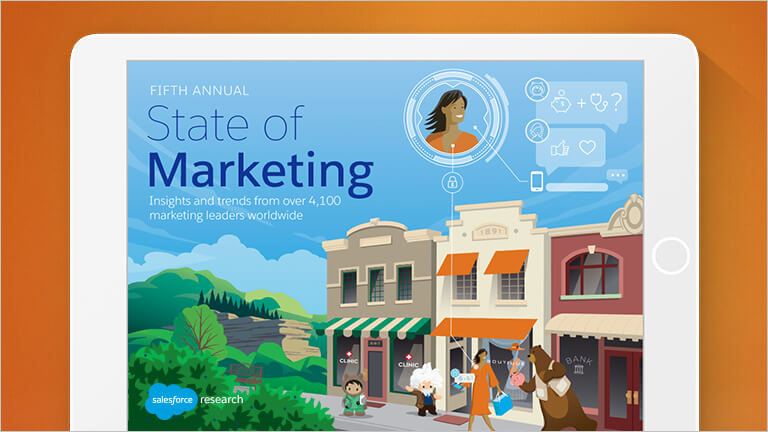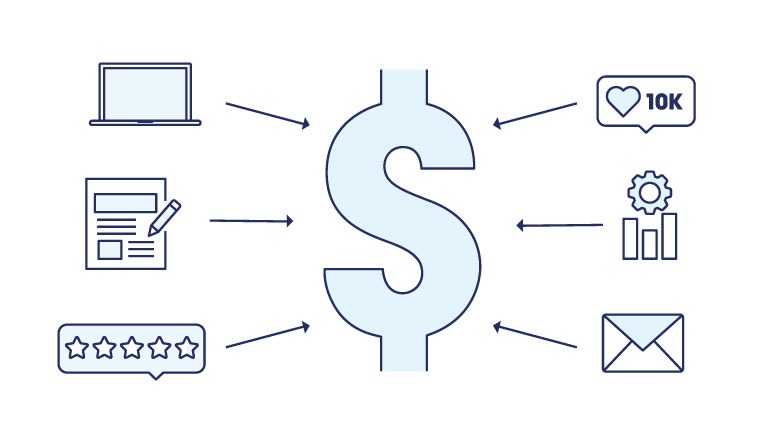How to Conduct Thorough Market Research for Your Startup or Small Business
Market research empowers and helps you make the best decisions for you and your business.
Starting a new business venture is exciting. When you’re thinking about launching and promoting your service, it can be easy to get caught up in the fun details, like creating your website, getting the word out, building your social media presence, and making sales.
Before you get to the fun, though, you need to do some homework. Market research must be done for your company to know your competition — and beat it.
Market research is gathering consumer feedback on your product or service and collecting pertinent information on the marketplace. This information includes what your competitors are doing and how they’re pricing themselves. It’s an essential step when putting together your business plan.
You need to have a clear idea of your customers and competitors, as well as the landscape. After all, if there isn’t a demand for your product or service, or the space is too crowded, you may decide to pivot before entering the market.
Before you move forward with your small business or startup, you need to do the behind-the-scenes work.

Why You Need to Conduct Market Research
You can’t operate a business based on a “gut feeling” or “passion” and hope for the best. That’s not a plan.
Market research helps you determine whether there’s a fit for your idea and whether it’s something people will pay you for. You want to get a lay of the land and address the following questions:
- Who is your customer?
- What are their spending habits?
- What is the market like?
- Who are your competitors?
- What are your opportunities to grow, build out, and possibly shift your business?
Those questions are just the start. Where should you open a brick-and-mortar location? Should you have one at all? What about pricing? Where is the market for your offering headed?
The more information you have upfront, the better off you’ll be and the better business decisions you can make.
How to Do Market Research for a Startup or Small Business
Jumping off the questions in the previous section, you want to get clear on a couple more items before getting started.
- Figure out a budget. You don’t need a large budget, but you always want to be mindful of where and how you spend your money.
- Inform your team. If you have a staff, get them on board and make sure everyone knows their role in any market research task. Consider appointing a lead person or team to manage and store all related data.
- Get specific about next steps. You want to act on market research quickly, not several months after you collect it, because consumer insights could change. For example, you probably shouldn’t use January survey results to make decisions about the next winter holiday shopping season, which starts as early as October in the U.S. Determine how and when you will use this data, then use it promptly. Consider building out a V2MOM, an organizational system for creating and executing goals, to help nail down the specifics.
There are lots of ways you can conduct market research. It doesn’t have to cost a lot of money. For instance, you can use social media for cost-effective analysis, such as gathering feedback on a new product with Twitter polls, testing ads on Facebook, and even finding brand ambassadors on Instagram.
What about conducting market research for your business idea?
If you’re in the very early stages of planning an operation — perhaps you’ve mentioned your idea over drinks with friends or you’ve started scouring the internet for 101-types of articles to find out how to get it off the ground — market research is key. You may find that your idea is not something worth pursuing before you invest too much time or money. Your market research may also lead you to pivot one idea into an even better one.
The bottom line: Market research is important for your business plan and execution.

Gather Data on Your Business and Industry
Before going to market, gather data on everything from your ideal customer to the competitive landscape. According to Startup Nation, you want to collect primary data and secondary data.
- Primary data: This is new data you gather from prospective customers, the general public, or a mixture of both. For example, you can use focus groups and field trials, such as A/B testing two similar but different product options and recording the participants’ preferences. Primary data can help you determine your product’s plusses and minuses, as well as serve as a guide for how to price it.
- Secondary data: This is existing data you can use to retrieve customer information. It can include government census data and surveys done by other companies and organizations. Secondary data serves as a larger view of the marketplace, but bear in mind that some data may be older and therefore outdated or a little misleading.
Here are three additional popular methods used to conduct market research.
- Interviews: Can include conversations in the idea phase or after other analysis exercises, such as post-focus group or survey research
- Experiments: Controlled testing to prove or disprove theories about your product’s utility
- Observation: Monitor and record consumer behavior and reactions
Different types of market research result in different timeframes — anywhere from an hour to months at a time — and have varying price points.
As you consider the methods you want to use, be respectful of people’s time. Look into ways to perform your research correctly and without bias. Make sure to clear any potential payments, cash or otherwise, with your legal and finance teams to stay on top of any tax liabilities.
How Much It Costs to Conduct Market Research
According to Vernon Research Group, generally speaking, you can expect to spend between $4,000 and $6,000 per focus group, between $15,000 and $35,000 on consumer research, and up to $50,000 for business-to-business research.
Market research typically isn’t inexpensive. It’s a budget section that can be worth hundreds to thousands of dollars. The actual amount can vary greatly depending on your industry, budget, and personal preference; if you prioritize market research, you’ll likely spend more resources on it. You can pay a company that specializes in market research to collect and report on this data for you, or you can organize market research initiatives on your own.
When it comes to activities like focus groups and surveys, you can incentivize people to help with your research efforts in a number of ways. Some participants will offer their input without compensation, while others will be happy to contribute information in exchange for gift cards, financial rewards, discounts, or a free product or trial of your service. Regardless of what you offer, it’s important to be upfront with what participants will receive. Be specific. Don’t tell participants they’ll get $20 if you’re offering a $20 Amazon gift card, for example.

Free and Cost-Effective Ways to Do Market Analysis
You can find free and inexpensive ways to collect customer and competitive insights, too.
The U.S. Small Business Administration has a roundup of business and consumer statistics resources on its website. You can also see if your city offers grants or assistance for small businesses that you can apply toward market research. Your local library or industry trade association may offer free or low-cost opportunities for you to conduct analysis through books and online databases.
When it comes to software, you can often sign up for free trials of many content research, SEO analysis, and survey tools. Experiment with different ones and see what suits your business best, then convert to a subscription for the tools you rely on most. It’s worth making an investment in software that supports your growth, after all.
Once you have a business website, install Google Analytics. It’s a free tool that enables you to access information on your site visitors — demographics, location, the type of device they're viewing your site on, and more — and get insights on the types of pages and content on your website that they’re consuming most or least. If you run an ecommerce business, Google Analytics can help you see if and where you may be losing people during the conversion process. The availability of reports (there are many you can set up) can also help you improve your landing pages, behavior flow, and more.
Don’t Skip Market Research
Your company’s success depends on how well you know and can serve your customers, and this starts before your business makes its first sale. It can be tempting to spend less time on this part of building your business, but it’s crucial that you invest the time and energy to perform quality market research.
Good market research empowers you and helps you make the best decisions for you and your business. Guesswork can cost you valuable time and money, while data-based decisions can drive your business in the right direction.

Guide
5 Ways Marketers Can Innovate to Drive Growth

Report
Salesforce 6th Edition, State of Marketing

Guide
How to Grow Your Business with Lead Generation

Article
The Basics of Marketing ROI

Article


